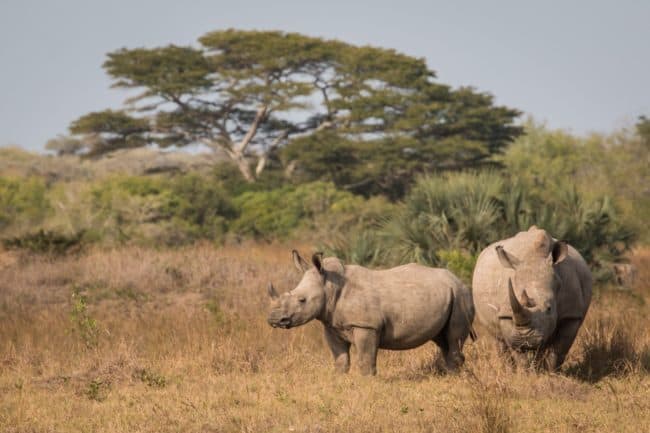
I have been spending a lot of time reflecting my passions. As the years go by with this blog, I go through cycles of feeling lost, then finding direction and trying something new, to sticking with what I know works best. I’ve been in a bit of a creative rut for a while and am on the verge of yanking myself out of by going back to my roots and following my passions.
Oftentimes when I try to explain what I do, I don’t describe it well in normal terms. I don’t like saying I’m a blogger or a writer or a photographer. For a while I said “influencer” but then I thought that sounded really pretentious so I stopped that too. Cue existential crisis – what am I?
The more I think about it, the more I realize that I am a storyteller. Everything I share fundamentally interests me and piques my curiosity in a way that makes me want to share the story. Writing and photography are tools to help me make that happen.
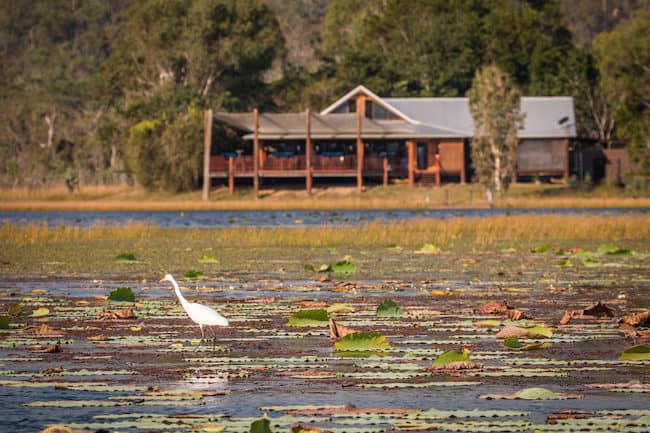
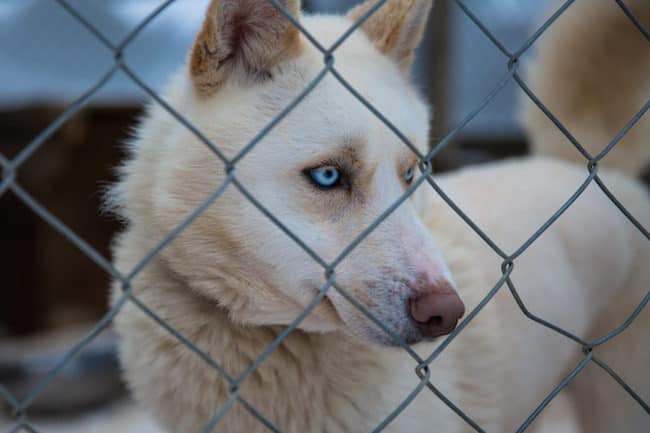
I love storytelling, and I love being creative. I thrive on taking risks and stepping into the unknown and producing work that might inspire others to do the same. At the risk of sounding full of myself, I almost consider myself an artist. I think all photographers are artists in their own way.
So Adobe asked me what I am passionate about, and right now the answer is easy. I’m passionate about nature and wildlife and being able to share that story in a fun relatable way – something which has become inherently visual to me over the past few years. In fact, I think you can pinpoint my interest and love for photography to my passion for wildlife. My Instagram page is a perfect example. Since moving to New Zealand a few years ago, my passion for the outdoors and the natural world has skyrocketed, owing to the fairly obvious fact that I am now living in one of the last true paradises on earth – in my humble opinion.
Almost every photo I share on my blog and on my social media is processed in Lightroom and Photoshop, so the Adobe Creative Cloud Photography plan has become as inherent to my visual storytelling as my camera. So I’ve decided to sit down and share some of my best wildlife photography tips and ideas around my passions for storytelling and photography.
Enjoy!
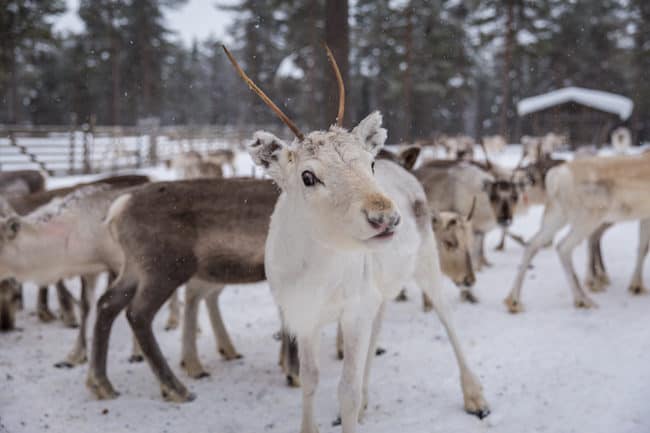
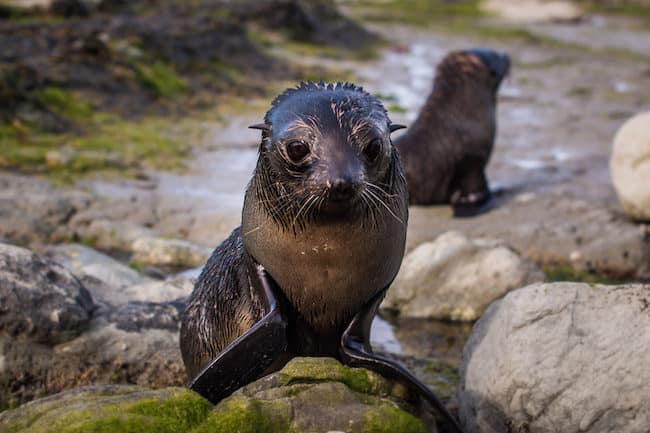
1. For the love of animals!
I think deep down in all of us, we have a love for nature and animals. How many people say they don’t love animals? None.
Given how spectacular it is to see wildlife in their natural habitat, it is no wonder that it’s so often is predominantly featured on our bucket lists and as part of our travel goals. Seeing lion cubs in Africa? Of course! Swimming with Whale Sharks in Mexico? How that is even a question? Seeing grizzlies in Yellowstone, gorillas in Uganda, koalas in Australia, penguins in Antarctica, polar bears in Canada. I mean come on, who could say no to that?
I think seeing wild animals is a great appeal to travel. And for me it certainly makes a good story. How can you begin to compare seeing a lion sleeping in a zoo with tracking a pride of wild lions on safari in Africa for 3 days before finally finding them as they are taking down a warthog?
Circle of liiiiiife!
I mean, the sound of a dying warthog is pretty much the worst thing ever and it’s something you can’t unhear. But, I will say that spectacular experience (with camera in hand) helps you share the story later, which is truly amazing. Being able to capture my passion for wildlife in such a stunning way is priceless.
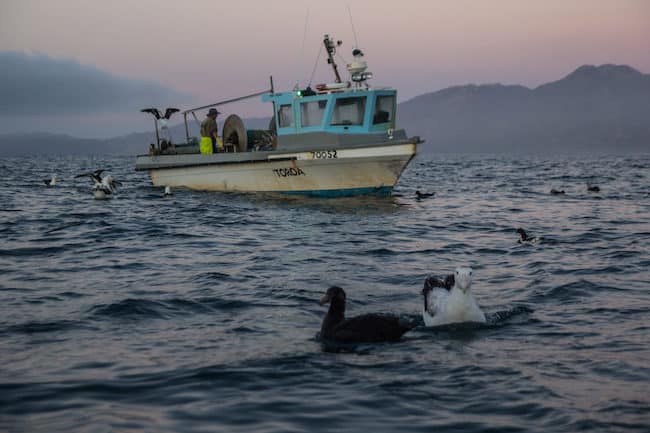
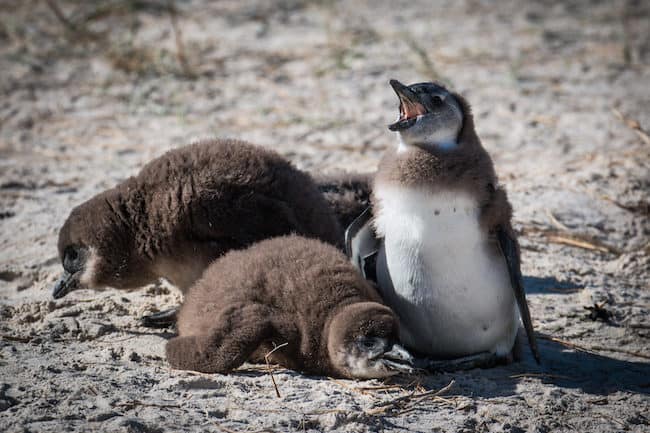
2. Have the right gear for you
Despite what people say, there is no “right” camera. I don’t know who said this, but I always remember it, the best camera is the one you have with you. True story (more of my thoughts on gear). While I love Canon, I’ll shoot with whatever is in front of me. I have photos of crocodiles in Australia and selfies with Mongolian eagles with just my phone. I’ve used all sorts of different cameras and lenses over the years when shooting wildlife and I have only one piece of advice – get a good zoom.
Having a telephoto lens, I’m talking more than 70mm, is something I feel strongly about because I’ve seen too much bad behavior around wildlife regarding personal space. For example, in New Zealand there are signs all over the place telling you what distance to keep between you and animals like seals or penguins, but do people listen? Nope.
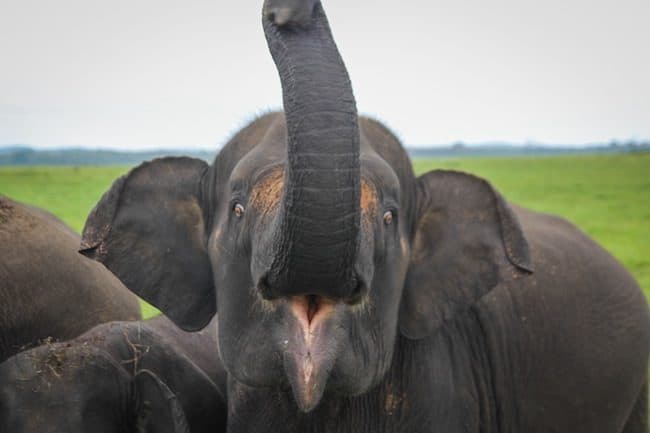
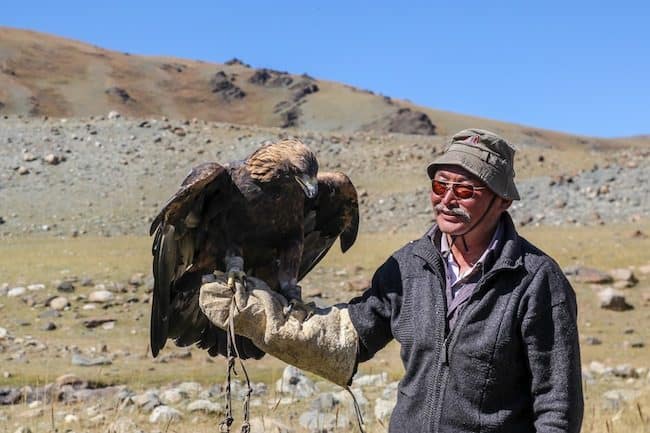
Of course there are exceptions to the rule, especially when you’re in the ocean. In general, I prefer to watch wildlife than engage with them.
If you have a good telephoto lens, then the distance doesn’t matter because you can safely take wildlife photos from far away. I use the Canon 70-300mm telephoto and it’s amazing. You’ll get the best, most natural photos if you respect their distance.
I wish I had this lens when I was attacked by monkeys in Bali and charged by an elephant in Sri Lanka (neither of which was my fault).
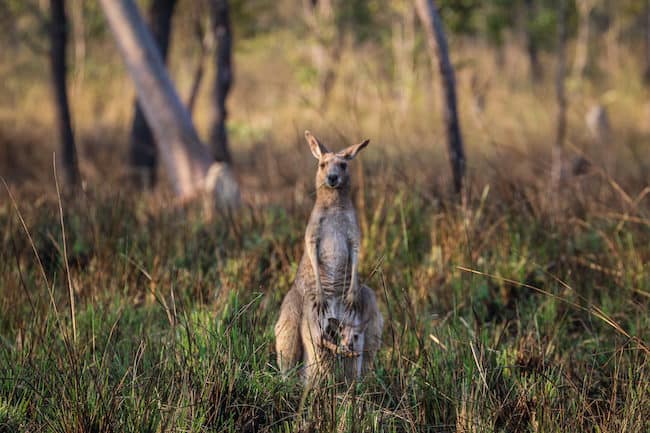
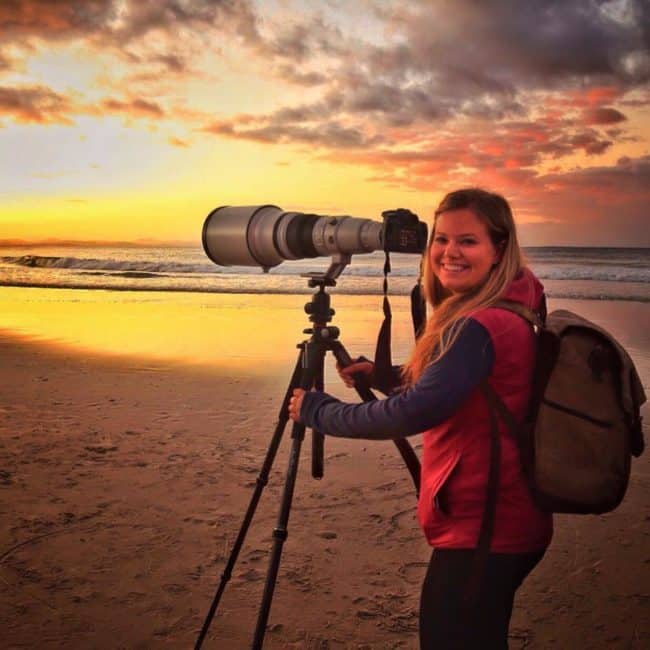
A 600mm lens is a little excessive but fun to play with
3. Practice and focus
Last year I invested in a portrait lens that I love to use on animals. Is that weird? Nevermind. It’s the Sigma 50mm f/1.4 lens and I wish it was the first lens I ever used. It’s perfect to learn on. Because you can drop the aperture down to 1.4 (which is really big) and you can get the most beautiful portraits with stunning depth of field. This means that the face is really sharp and focused and the background is blurry with great bokeh effect.
In fact, if you are shooting at f/1.4 it’s so sharp that you have to focus on the eyes because the nose will blur a bit and vice versa. Learning to shoot focusing on the eyes is hard, especially with animals and takes practice – the details are always in the eyes. In fact, shooting wildlife in general takes practice because you have no control over their behavior and you have to be fast and prepared for anything.
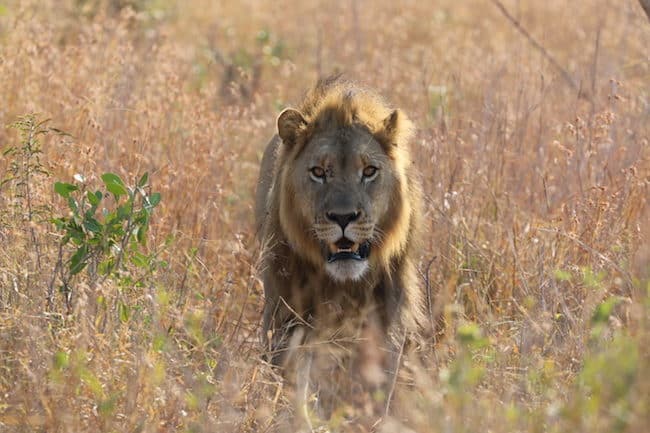
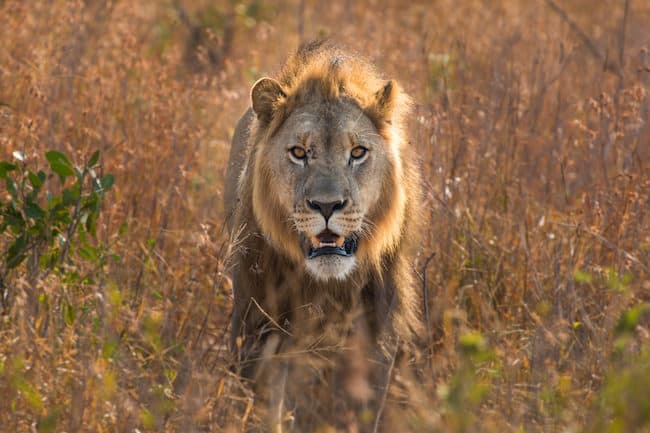
So if you have any pets, practice taking their portraits. I’ve spent hours practicing with my new lens on my flatmate’s cat before I used it shooting the kakapo in New Zealand, as I knew I wouldn’t have much time with the birds and had to get it right. I reckon as a photographer, the hardest thing is getting the focus right so it’s a good idea to practice at home before hitting the road.
I see wildlife photography almost as an extension of portrait photography, except in this case the animals don’t listen to your tips and might eat you given half the chance. Not quite so different after all I guess.
While you can’t completely fix an out of focus image in post-processing, I still sharpen as much as I can in Lightroom while editing in the details panel. Normally I adjust the radius down in the details panel and sharpen. I also often play around with focusing and defocusing different parts of the image in order to draw attention to the subject by selective focusing. You just click the radial filter which you can create a circular or elliptical mask over a specific spot in your image. Then you can either sharpen, highlight, expose, etc. outside the filter to draw attention to the subject, or you can invert the mask and play around with the part of your image inside your photo. The same principle applies to using a graduated filter or a brush for certain areas, like the eyes.
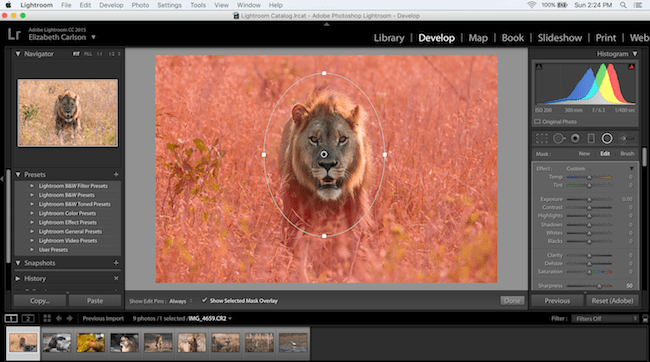
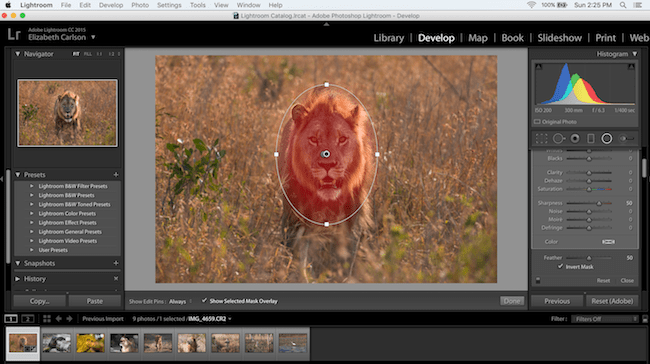
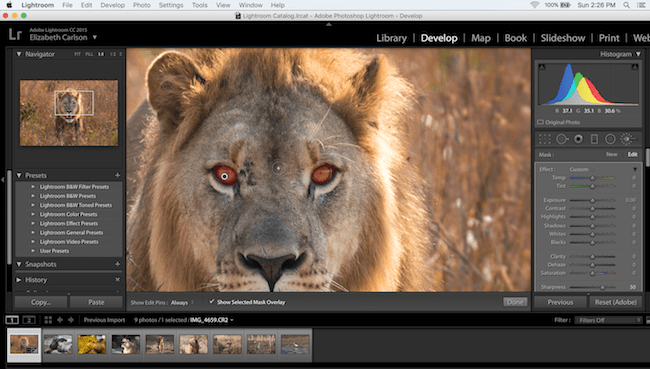
4. Right place, right time and lots of patience
You can’t force wildlife photography – you’re interacting with wild animals, so that means being in the right place at the right time. Whether that means planning your trip around animal migration or making sure you have enough days in one place to ensure that you have a good chance of seeing something special, it’s up to you. Also make sure you’re prepared with all the equipment you might need including enough memory cards and batteries. You can never have too many batteries.
To me it seems like everyone is in a rush around the world nowadays. Just enjoy the experience. It’s not about getting the best photo of the lion the world has ever seen, it’s about the journey to that moment.
I’m going to be honest here, I don’t have heaps of patience in anything I do but wildlife photography has slowly been teaching me this lesson over the years, and I am so grateful. As I write this I am reminded of that photographer who spent three months sitting in a watering hole hoping to get a shot of the lions drinking. Wildlife photography goals. One day guys! In the meantime I’ll work on sitting still for a few hours waiting for a bird.
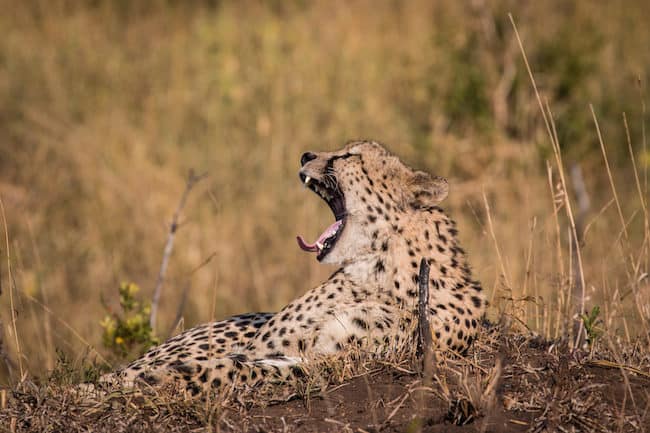
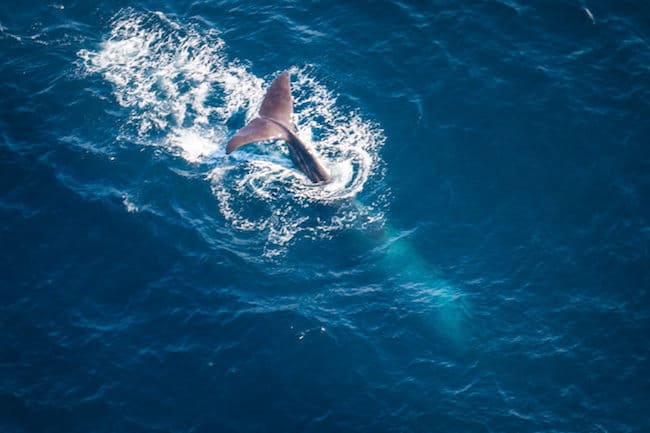
5. Be proactive and eager
Always take more photos than you mean too. Always. When you are out in the elements looking at the tiny screen on the back of your camera, it is really hard to tell what’s in focus, what isn’t, and if you have it composed how you want to, and if it’s properly exposed if you are in a harsh environment or if the animals are on the move.
I learned that on a safari in Africa and also bird watching in Australia. Even when I want to stop, I fire off a few more clicks of my camera. Sometimes I even go back another day if possible. Everything is changing, and wildlife photography is so unpredictable so it’s important to keep trying because even when you think you nailed the shot, you might not have or there’s an even better shot just around the corner.
If you are really passionate about wildlife, then it’s easy.
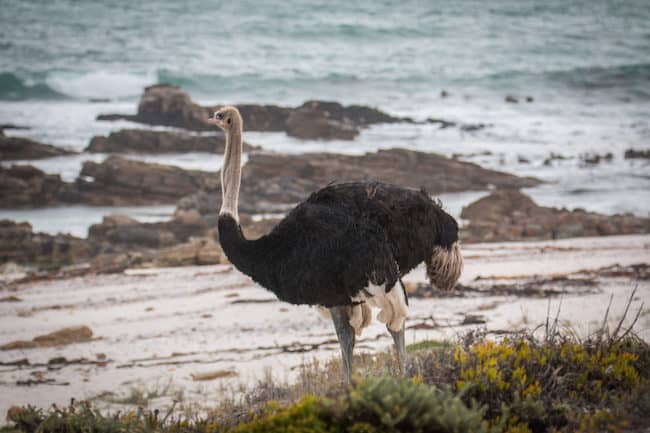
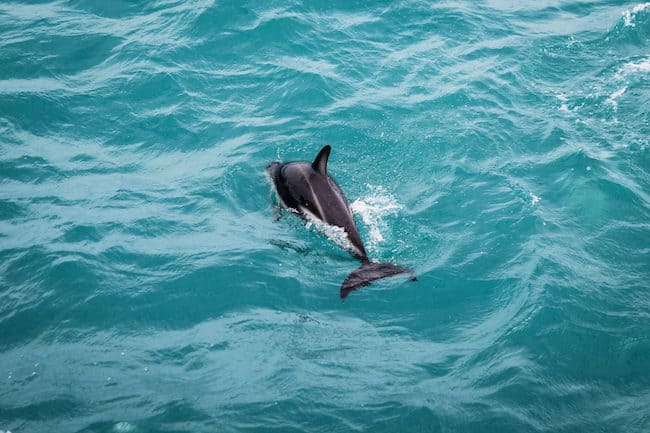
6. Respect
I already touched on this, but I think it’s really important to respect the animals in their environment. I shouldn’t have to say it but I feel like I do. We live in a world where people are obsessed with the right shot and perfection. Getting the perfect selfie or snapping the most amazing photos without considering the consequences.
Wild animals are wild animals and they deserve our respect in their territory. Apart from the fact that it can be really dangerous to get too close to them. Cough, cough all the people in New Zealand trying to pet baby seals – did you know seals carry a lot of different diseases, and if one bites you you’ll be hospitalized for months? We can also harm them if we try and get too close.
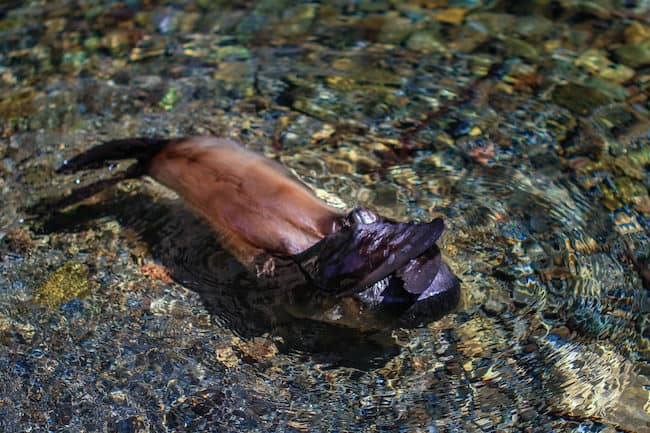
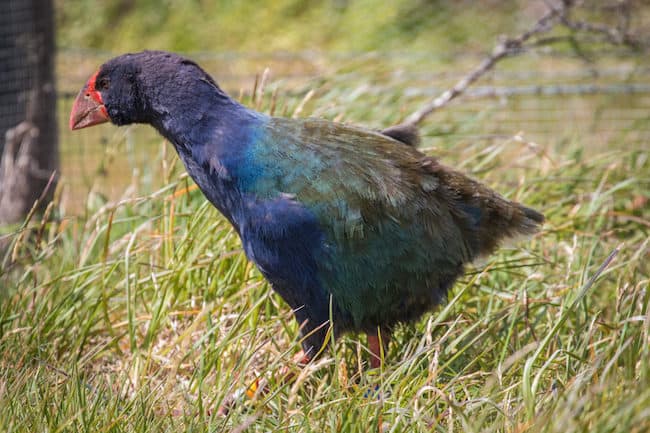
My friend Craig Parry is one of the most amazing underwater photographers I’ve ever seen. He does a lot of beautiful nature and wildlife photography in Australia and runs workshops in Tonga with the humpback whales every year. The way he interacts with wildlife is magical, and I remember him telling me about swimming with the whales and allowing them to come to him, giving them space and respect and time to adjust to his presence, until one time a mother literally brought a calf over to show him.
Moral of the story, let the animals come to you. Unless it’s a lion.
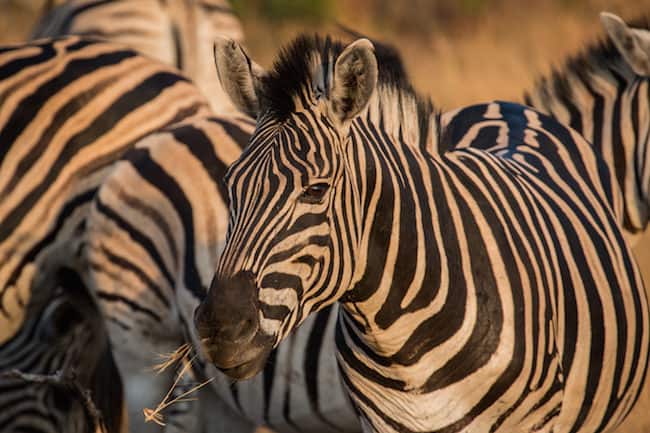
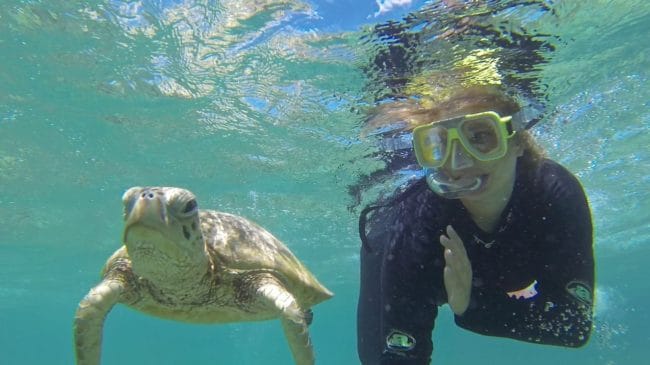
7. Post processing
In my opinion once you’ve taken a shot, only half the work is done. The rest happens at home in front of your computer as you perfect your masterpiece. I’ve been using the Adobe Creative Cloud Photography tools, Lightroom and Photoshop, for as long as I can remember, for me they are the only photo editing tools out there that matter. Nothing I post goes live without being worked on.
This goes back to the idea that photography is an art and all photographers are artists. My friend Trey Ratcliff told me that once. How you edit and how you frame a shot is unique and up to you. It’s your opportunity to add your voice to the story, show your interpretation of the work.
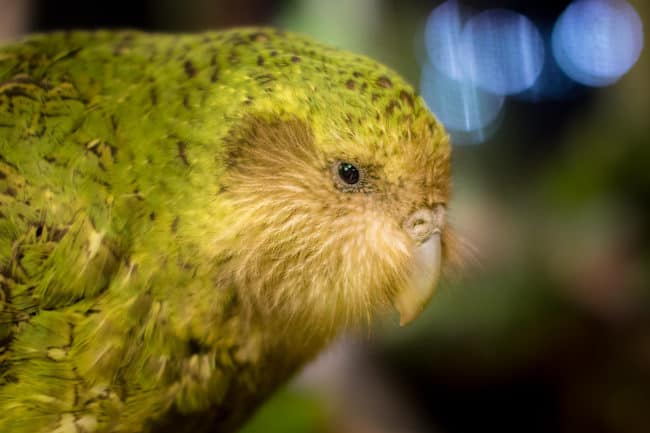
As the years go by I have found that quality over quantity matters, and I went from being able to edit a photo in a few minutes to spending hours or even days on one shot in Photoshop and Lightroom. I went from shooting JPGs to shooting RAW files (which you should too) and have constantly worked on improving my editing process.
While my editing process varies image to image it generally can be broken down into these basic steps and questions I go through in Lightroom.
- Adjust the horizon and crop as necessary, center the image and take into account how a subject is placed
- Adjust the white balance, if off
- Pull any highlights down, adjust shadows, exposure, contrast as needed, bump the clarity up a bit and any vibrance
- Adjust any specific colors within the shot (for me this is usually just desaturating the yellows)
- Sharpen as needed
- Spot removal if any visible dust spots in image or if anything needs to be removed, like dirt or marks
- Add any radial, brush or graduated filters to draw focus or correct specific areas in the image
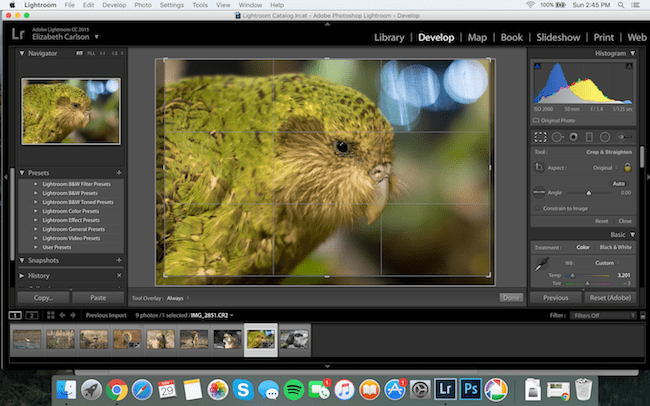
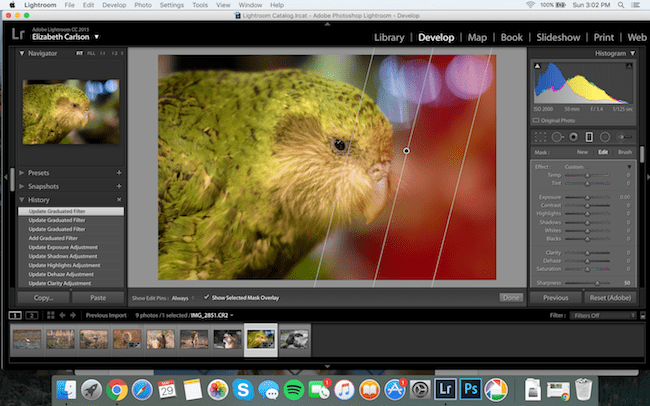
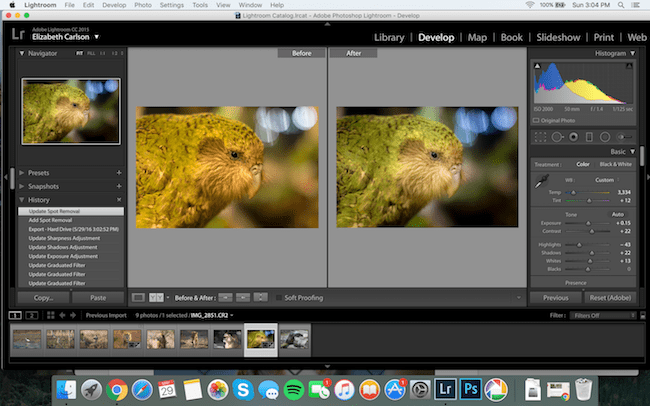
8. Keep learning, be open
Just when I think I’ve learned it all, someone shows me something I never even thought about. So much of what I have learned has come from talking to other photographers, asking questions, trial and error, and watching video tutorials online, like Elia Locardi’s landscape course. Even now I still download courses and am always Googling photography tips and Lightroom tricks so I can keep getting better.
Be open-minded, be curious, follow your passions and keep learning new things and sharing your stories with the world.
What are you passionate about? Do you enjoy wildlife travels and photography? Have any other tips to share?
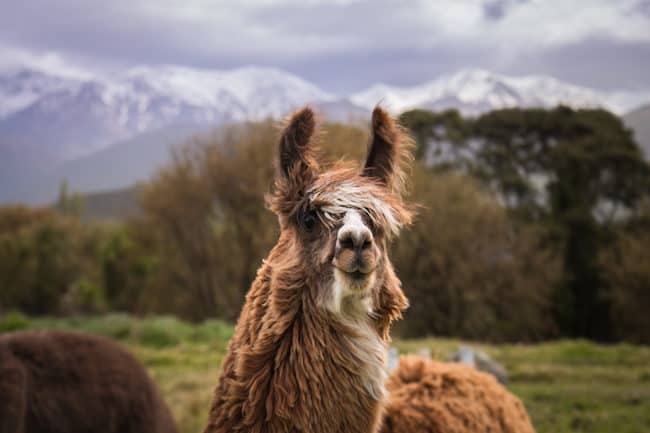
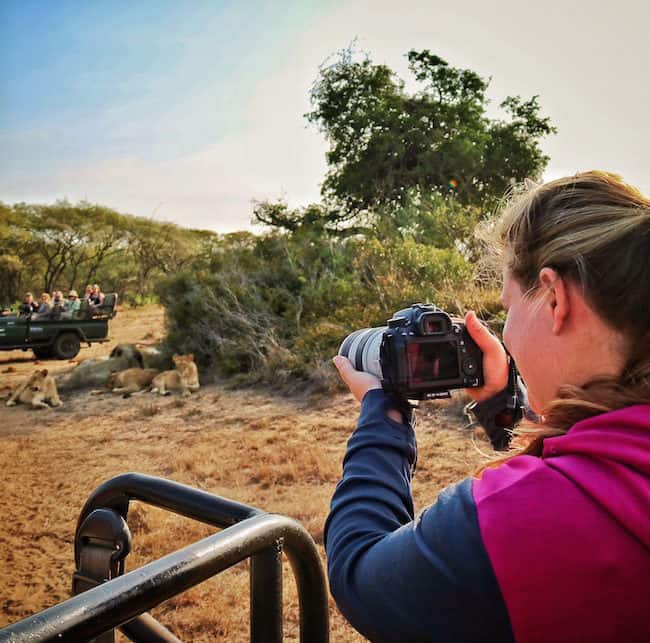
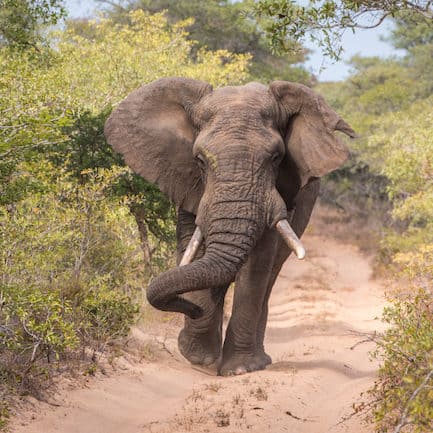
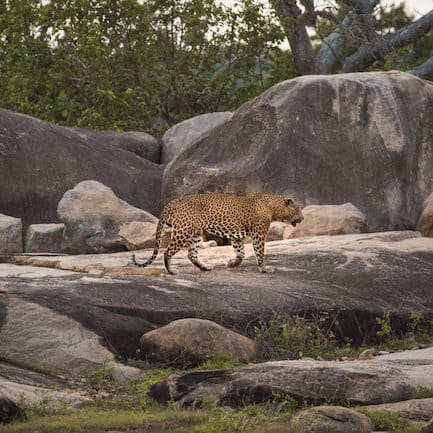
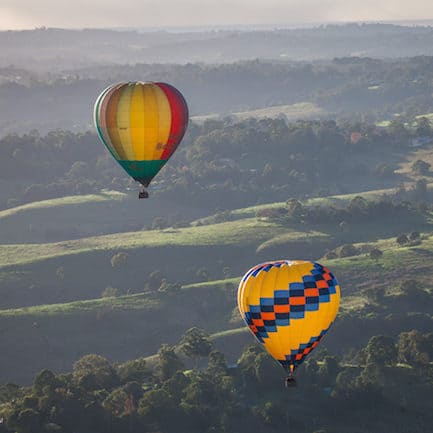
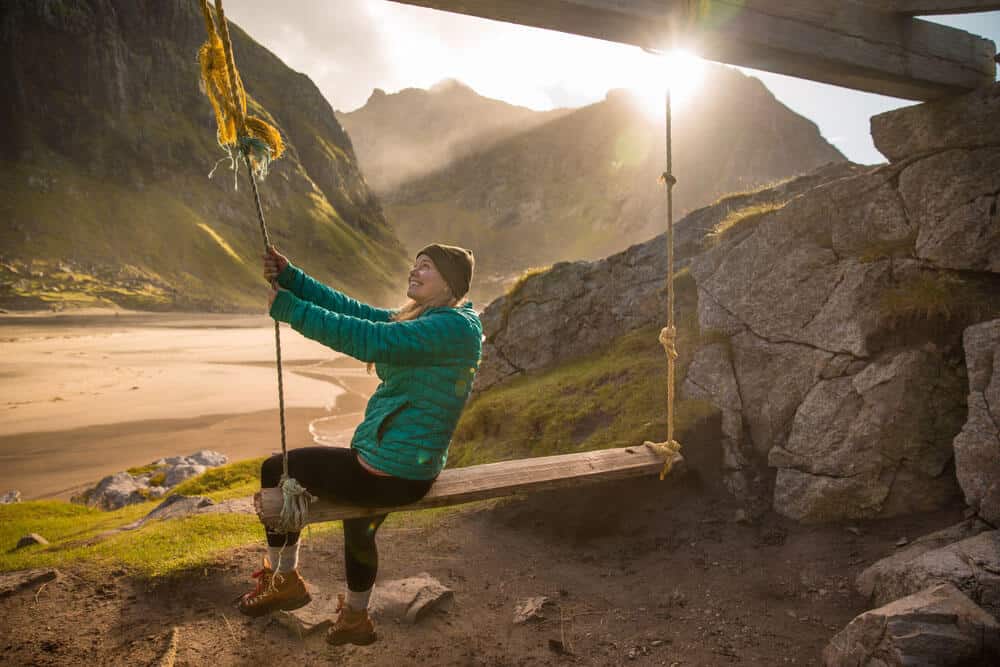
Total life saver i always go on safaris and i never love the end result of the photos i take. I will definitely put these into action next time round
Good luck!
The Elephant photo is great – he sees a problem and expresses his opinion – Go Elephant.
Some of my photo’s opportunities are take it now or loose it – my settings are whatever I used on the previous shot. How do you handle a situation like this or do you just pass?
You need to learn to change your settings fast. usually you just need to change the shutter speed
Great tips! I really need to involve in some more camera lenses!
Love the kangaroo!
get a telephoto!
Hello
By chance I came to your website
You have very beautiful website .
I looked at the photos and I read the first few lines barely!
Although I am not a photographer, But I love taking photos
I wish good luck Liz.
Thanks!